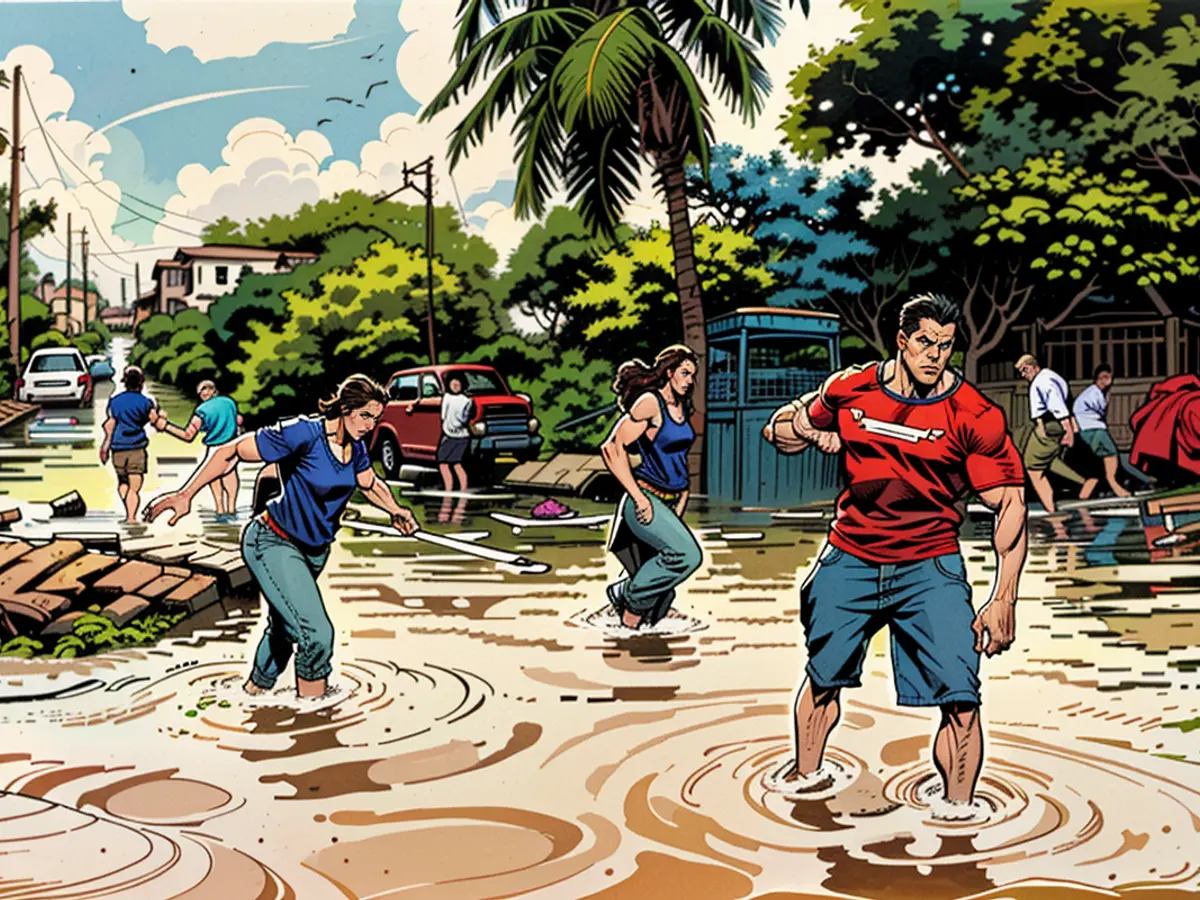Hurricane of the highest category rages in the Caribbean - At least one dead
"Beryl", the first tropical storm of the hurricane season, has developed into a "potentially catastrophic" hurricane with wind speeds of up to 260 kilometers per hour, according to the NHC. This is the earliest a storm of this highest Category 5 intensity has been recorded in the Atlantic.
In its first bulletin on Tuesday, the NHC stated that the wind could intensify to nearly 270 kilometers per hour. Three hours later, it was reported that "Beryl" could weaken during the day, but the danger would not decrease. The storm's eye was expected to move quickly toward the southeastern and central Caribbean Sea. On Wednesday, the hurricane was predicted to pass near Jamaica and on Thursday, near the Caiman Islands.
Before being upgraded to Category 5, the storm hit the Grenadian island of Carriacou. "Carriacou was flattened within half an hour," said Grenada's Prime Minister Dickon Mitchell at a press conference. Initially, no fatalities were reported, but this could change.
"We're not over the hump yet," emphasized the Prime Minister. Later, he posted on online networks that his government was working to bring relief supplies to Carriacou and the island of Petite Martinique. "The state of emergency remains in effect. Stay inside," Mitchell warned on Facebook.
The Grenadian UN Climate Chief Simon Stiell stated: "It's clear that the climate crisis leads to new records of destruction in catastrophes." His family in Carriacou was affected by the hurricane. According to Stiell's offices, his late grandmother's house was destroyed and his parents' house was severely damaged.
"The climate crisis is getting worse, and it's happening faster than expected," warned the UN Climate Chief. Governments and companies must therefore take much more ambitious climate action.
"Unfortunately, a person has died. There could be more victims, we're not sure," said Prime Minister Ralph Gonsalves of St. Vincent and the Grenadines in a Facebook video. "On one of the islands, 90% of the houses were heavily damaged or destroyed, the roof of the airport was torn off."
On Barbados, houses and businesses were flooded and fishing boats were damaged. Jamaica issued a storm warning. According to the NHC, the popular tourist Mexican peninsula of Yucatan is also threatened.
Due to climate change, the number and intensity of extreme weather events is increasing. The US National Oceanic and Atmospheric Administration (NOAA) expects an "exceptional" hurricane season this year with up to seven storms of Category 3 or higher. This is mainly due to the weather phenomenon La Niña and the very high temperatures of the Atlantic.
- Despite the potential weakness of "Beryl", the hurricane posed a significant threat to St. Vincent and the Grenadines, causing at least one death and severe damage to numerous homes and the airport's roof.
- Grenada's Prime Minister Dickon Mitchell expressed concerns about the situation in Carriacou, one of the Grenadian islands that "Beryl" had previously hit, stating that at least 90% of houses were heavily damaged or destroyed.
- The hurricane also impacted neighboring islands like Jamaica, which issued a storm warning, and the popular tourist destination of the Mexican peninsula of Yucatan, according to the NHC.
- In the aftermath of the hurricane, Prime Minister Ralph Gonsalves of St. Vincent and the Grenadines called for unity and cooperation in the disaster response, using Facebook to appeal to his countrymen to stay indoors and stay informed.
- The devastation and loss of life caused by the hurricane served as a stark reminder of the impacts of climate change, with Grenada's UN Climate Chief Simon Stiell warning that "the climate crisis is getting worse, and it's happening faster than expected".
- The destruction wrought by the hurricane in the Caribbean region highlighted the need for more ambitious climate action by governments and companies, with Stiell citing the damage to his family's homes in Carriacou as evidence of the crisis's urgency.
- As the Atlantic hurricane season gets underway, the US National Oceanic and Atmospheric Administration (NOAA) expects an "exceptional" hurricane season, with up to seven storms of Category 3 or higher due to the weather phenomenon La Niña and the very high temperatures of the Atlantic.







